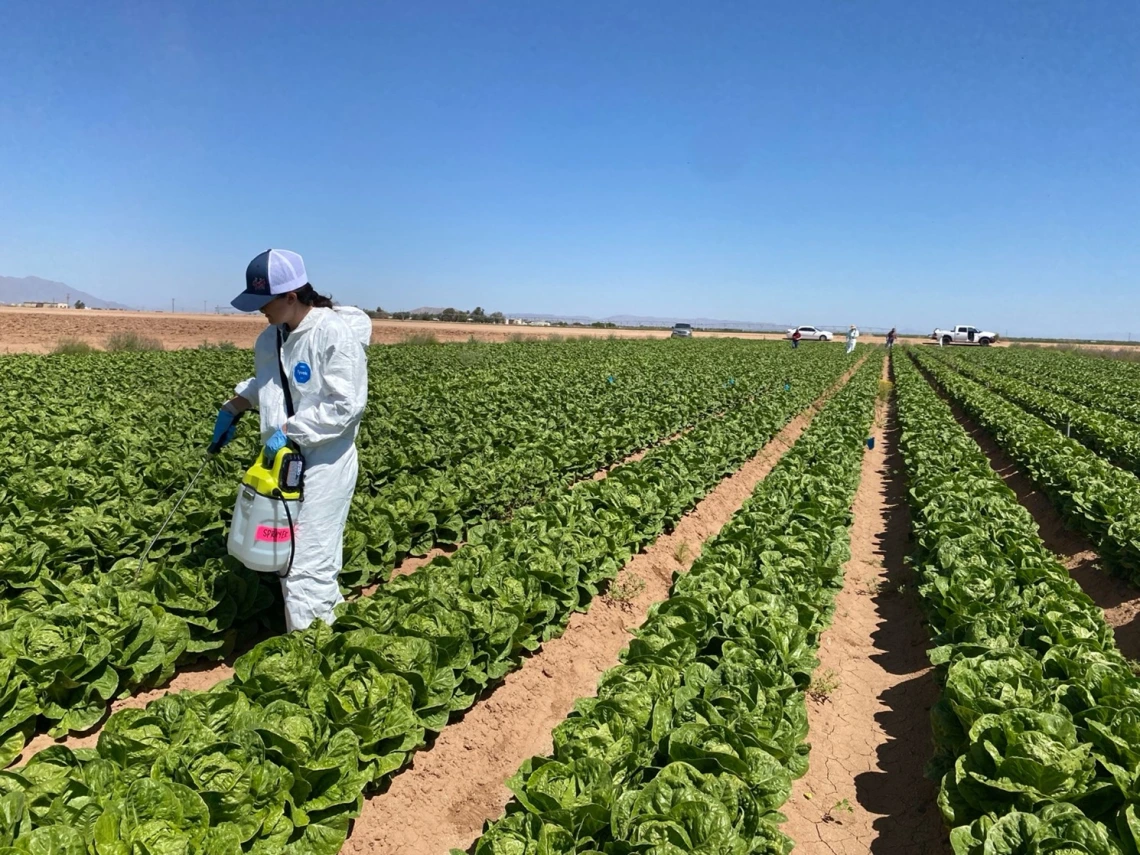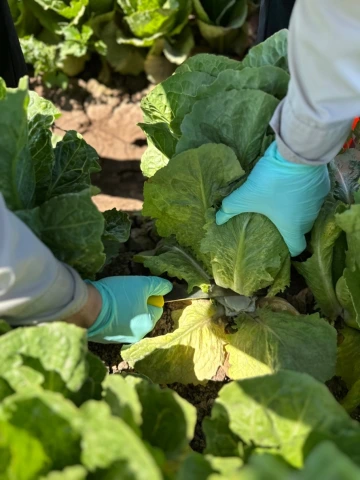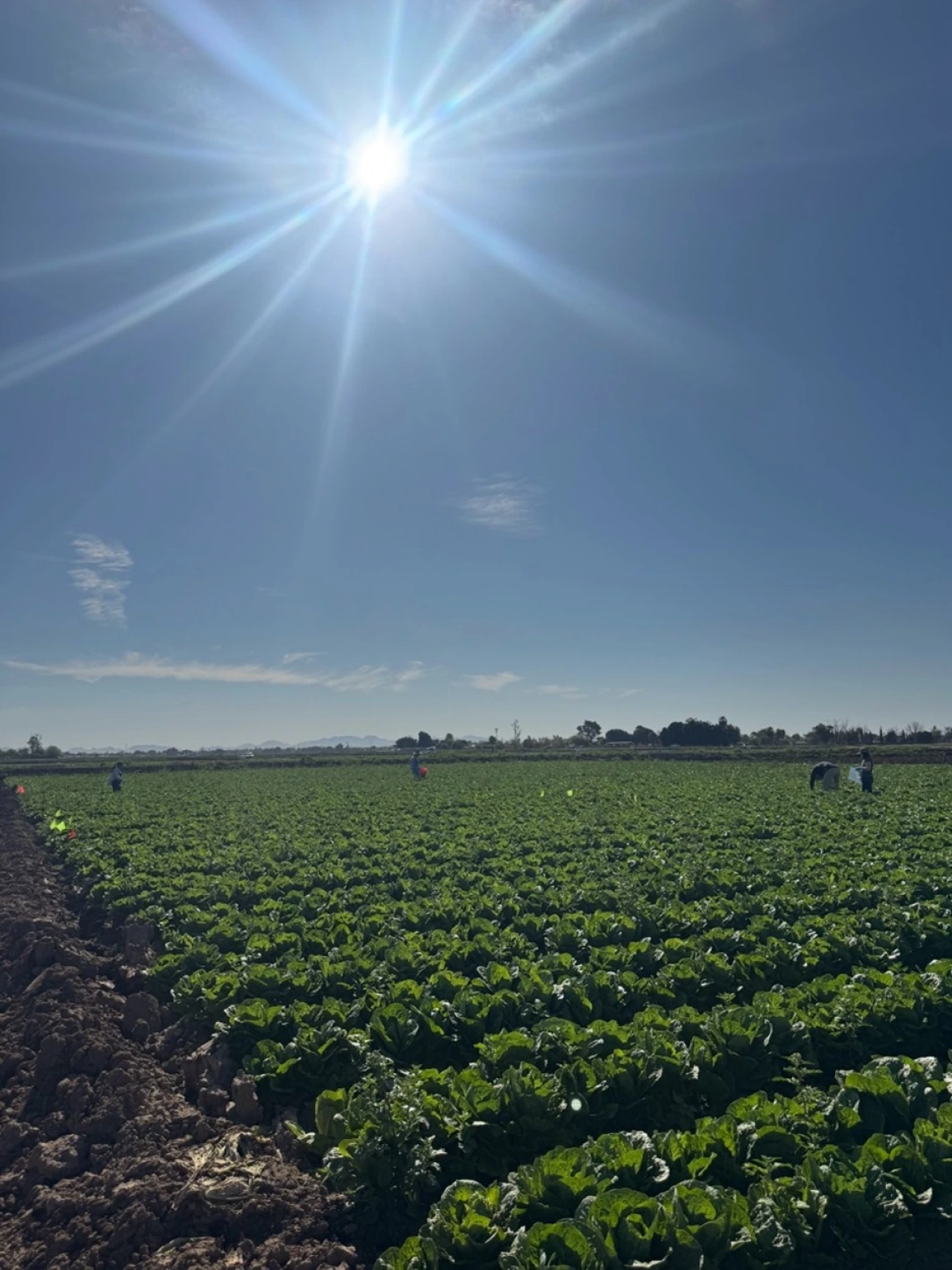From Lasagna to Lettuce: A Journey into Fresh Produce Safety

Simulating contamination in a romaine lettuce plot in Maricopa, Arizona.
Lasagna noodles, ricotta cheese, Italian sausage– just a few of the ingredients that defined my early academic journey. My Italian grandfather taught me how to make his mother’s lasagna recipe for a middle school project, a presentation on family history. That experience sparked a curiosity about food that has shaped my education and career in ways I could have never predicted.
Almost a decade later, I chose to study horticulture, particularly fruit and vegetable production, and culinary food science, two fields I once considered parallel interests. Horticulture rooted me in agricultural systems, teaching me how crops are cultivated, production challenges, and environmental factors that influence growth. Culinary food science expanded my perspective beyond the field to processing, quality, and the role of ingredients in shaping the foods people enjoy. For much of my undergraduate work, I compartmentalized these disciplines, seeking a way to integrate them meaningfully.
That integration revealed itself in food safety, specifically fresh produce safety, which became the focus of my master’s program and my ongoing doctoral work. My research sits at the intersection of horticulture and food science, examining the pre-harvest environment, a stage of production susceptible to contamination. In my work, this refers to open-field production systems, where fresh produce is directly exposed to environmental factors such as weather and wildlife. Understanding and managing these risks is critical to ensuring a safe food supply.

Sampling romaine lettuce to monitor bacterial survival.
This work has become especially important as the regulatory landscape has evolved. Under the Food Safety Modernization Act, the Food and Drug Administration (FDA) implemented the Produce Safety Rule (PSR) to strengthen the fresh produce supply chain and prevent foodborne illness outbreaks. Subpart E is a critical component of this rule. It governs pre-harvest agricultural water, or water that is intended or likely to come into contact with produce, such as irrigation water. While essential for fruit and vegetable production, water can carry pathogens or disease-causing microorganisms, including Escherichia coli O157:H7 and Salmonella. These microorganisms can have determinantal impacts on public health and safety, including illness, hospitalizations, and in extreme cases, death.
In 2024, Subpart E shifted from a test-based approach to a systems-based framework. Rather than relying solely on microbial water testing, growers must now evaluate factors such as water source, irrigation method, timing of water application, and nearby land uses, that influence potential food safety hazards. While this approach offers flexibility, it also places more responsibility on growers to assess risk in complex and changing environments. This is where my research comes in.
Alongside my advisor, we surveyed academic experts and produce industry professionals to understand research gaps regarding Subpart E. Responses revealed uncertainty in compliance, highlighting the need for field-based data. To address this, we designed trials in Arizona that simulate produce contamination under realistic pre-harvest conditions. Our initial work has focused on romaine lettuce, a key crop to Arizona production, with plans to expand into other commodities. By monitoring bacterial persistence over time, we are generating data to inform on-farm risk assessments and develop practical resources to support growers navigating the updated PSR requirements.

Research trial plot of romaine lettuce in Yuma, Arizona.
Looking back, I never would have imagined that a family lasagna recipe would eventually lead me to standing in a leafy green field in Arizona. Yet, the path feels fitting. Food has always been a source of connection between family, culture, and community. In many ways, food safety extends that connection outward, ensuring that when fresh produce reaches the dinner table, it provides nourishment rather than risk. My hope is that this work not only advances science but also supports growers who feed us and the families who depend on them.

